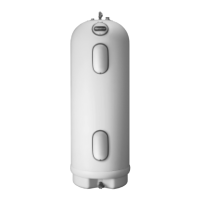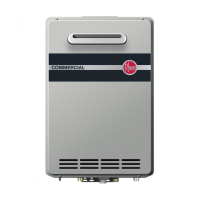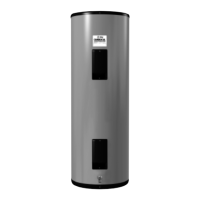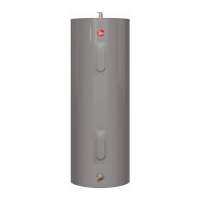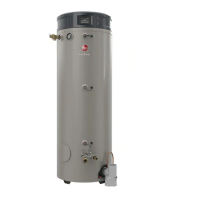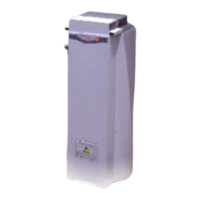43
INSTALLATION INSTRUCTIONS
Vertical Vent Installation
WARNING: Improper vent installation can
result in death, personal injury, product damage, and/
or poor performance.
NOTICES:
• Only Rheem-approved AND ULC S636 approved
termination and parts must be used during
installation.
• Maintain the recommended air space clearance
to combustible materials and building insulation.
Cut a hole through the roof and interior ceiling to
accommodate the vent pipes.
Complete the vent pipe installation to the water
heater’s vent connector fittings. Use cleaner-primer
and PVC cement where the vent pipes join the water
heater.
Support vertical and horizontal runs as described
on page 35. Vertical supports are required every 4
ft. (1.2 m) along a vertical pipe route, after every
transition to vertical, and after every offset elbow.
NOTICE: Free-standing vent pipe that penetrates
a roof/ceiling requires another means of support from
a second location.
Determine the vent terminal height and install
the vent pipe accordingly. Refer to “Vertical Vent
Terminal Location” on page 44 for clearance
requirements.
Install adequate flashing where the vent pipe
passes through the roof.
Air Intake Condensate Trap
For vertical terminations or where the air intake
pipe slops down towards the water heater, it is
recommended to install a drain tee assembly. This
is to prevent any condensate or liquid water from
entering the intake of the water heater. Connect the
trap drain line to a suitable drain. Do not connect it
directly to the condensate drain line from the water
heater.
One trap method: Glue a 3” by 4” adapter coupling
to each end of a 4” PVC pipe length. Drill a ½” hole
in the side of the larger diameter pipe. Tap and
thread for a ½” barbed fitting, install fitting. Install
the collector with the fitting facing down. Do not
install in verticial position. Connect a drain hose to
the fitting and clamp, run hose to a suitable drain.
Hole
Through Roof
C
L
Hole
Through Ceiling
C
L
1
2
4
5
3
1
Venting
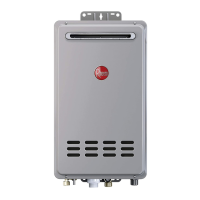
